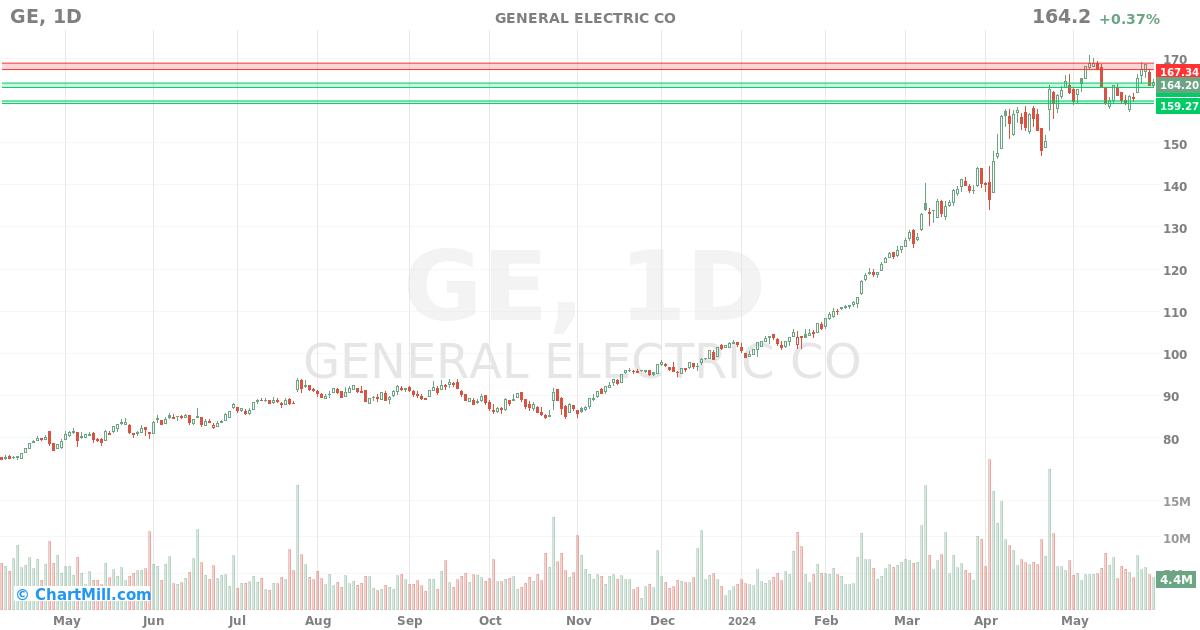Interesting Technical Analysis finding for GENERAL ELECTRIC CO (NYSE:GE)
By Mill Chart
Last update: May 31, 2024
GENERAL ELECTRIC CO (NYSE:GE) was identified as a Technical Breakout Setup Pattern by our stockscreener. Such a pattern occurs when we see a pause in a strong uptrend: after a strong rise the stock is consolidating a bit and at some point the trend may be continued. Whether this actually happens can not be predicted of course, but it may be a good idea to keep and eye on NYSE:GE.
Zooming in on the technicals.
As part of its analysis, ChartMill provides a comprehensive Technical Rating for each stock. This rating, ranging from 0 to 10, is updated on a daily basis and is based on the evaluation of various technical indicators and properties.
Taking everything into account, GE scores 10 out of 10 in our technical rating. Both in the recent history as in the last year, GE has proven to be a steady performer, scoring decent points in every aspect analyzed.
- The long and short term trends are both positive. This is looking good!
- Looking at the yearly performance, GE did better than 96% of all other stocks. We also observe that the gains produced by GE over the past year are nicely spread over this period.
- GE is part of the Industrial Conglomerates industry. There are 10 other stocks in this industry. GE outperforms 100% of them.
- GE is currently trading near its 52 week high, which is a good sign. The S&P500 Index however is also trading near new highs, which makes the performance in line with the market.
- In the last month GE has a been trading in the 157.36 - 170.80 range, which is quite wide. It is currently trading in the middle of this range where prices have been consolidating recently, this may present a good entry opportunity, but some resistance may be present above.
Check the latest full technical report of GE for a complete technical analysis.
Looking at the Setup
Besides the Technical Rating, ChartMill also assign a Setup Rating to every stock. This setup score also ranges from 0 to 10 and determines to which extend the stock is consolidating. This is achieved by evaluating multiple short term technical indicators. NYSE:GE currently has a 8 as setup rating:
Besides having an excellent technical rating, GE also presents a decent setup pattern. Prices have been consolidating lately. There is a support zone below the current price at 164.14, a Stop Loss order could be placed below this zone.
Trading setups like NYSE:GE
One way to play this would be to wait for the actual breakout to happen and buy when the stock breaks out above the current consolidation zone. A possible place for a stop loss would be below this zone.
This article should in no way be interpreted as trading advice. You should always make your own analysis and trade or not trade based on your own observations and style. The article is based purely on some technical observations.
More breakout setups can be found in our Breakout screener.
Keep in mind
This is not investing advice! The article highlights some of the observations at the time of writing, but you should always make your own analysis and invest based on your own insights.

